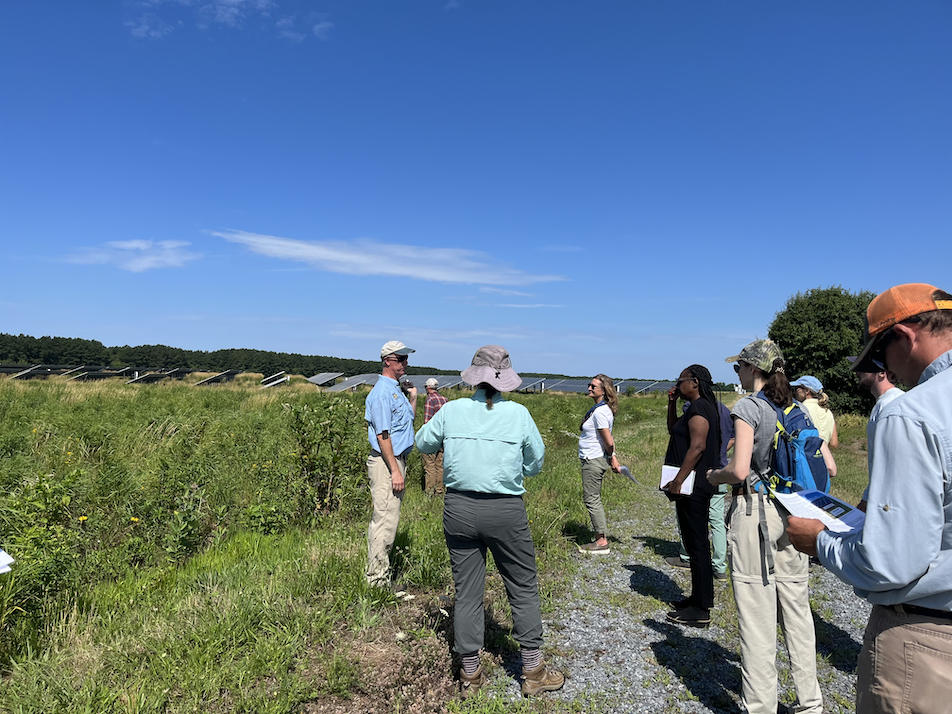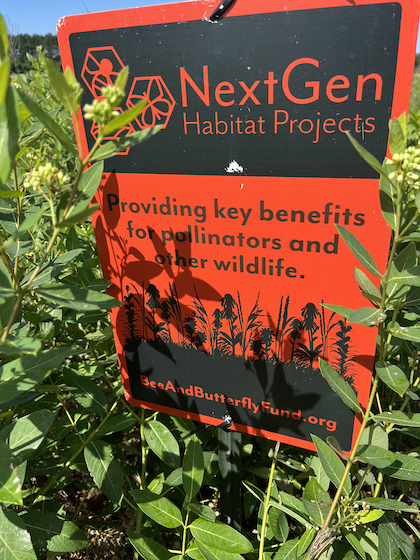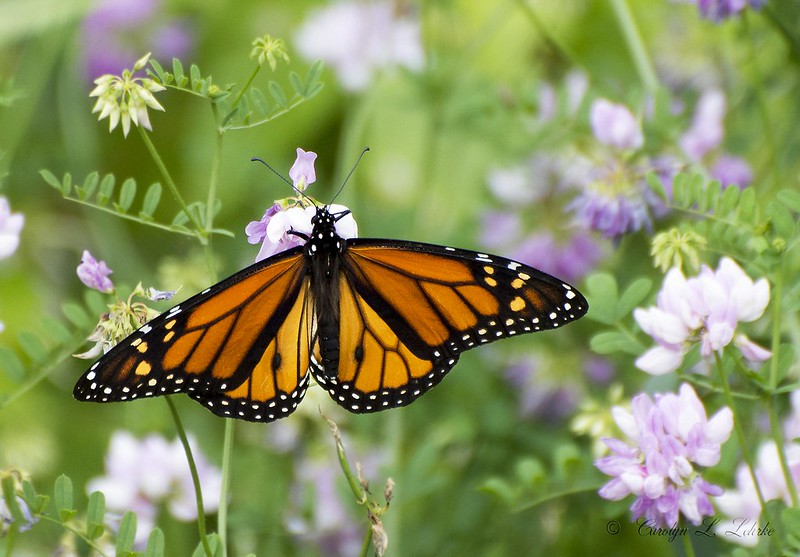Power for Pollinators

USFWS hosts a tour of the pollinator and solar fields at Easton Utilities' Easton Sustainability Center.
Who knew wastewater treatment could be beautiful? Surprisingly, that was the impression left after ESLC recently toured a plant operated by Easton Utilities. The facility, located on the Easton Sustainability Campus, was surrounded by a field brimming with flowers, buzzing bees, and a myriad of songbirds. The tour was organized by the U.S. Fish and Wildlife Service (USFWS) who partnered with Easton Utilities to integrate pollinator habitat within their existing solar field, a two-megawatt solar system installed in 2017 across approximately ten acres. The system generates more than enough electricity to power the wastewater treatment facility and feeds about 20% of the electricity generated back into the local electric grid. That’s the same amount of energy it would take to power approximately 346 homes—a tour-de-force of renewable energy, all surrounded by lightning bugs, monarchs, and milkweed. As ESLC continues to advocate for responsible and efficient land use on the Eastern Shore, multipurpose renewable energy projects like this offer some hope for the community, the agricultural economy, and the environment.

USFWS describes pollinators as “the engines that run healthy habitats.” In addition to benefiting wildlife, pollinators like bees, beetles, and butterflies also play a critical role in agriculture. An estimated one out of every three bites of food you eat exists because of the work of pollinators. As vast swaths of agricultural land on the Eastern Shore are converted to utility-scale solar fields, incorporating such pollinator habitat within the fields could positively support surrounding farmers.
Katie Stahl, USFWS’s manager for the treatment plant’s pollinator project, is optimistic about a range of potential benefits. During the tour she highlighted the fact that pollinator plantings can provide habitat for beneficial insects, serve as windbreaks, help stabilize soil, improve soil health, and improve stormwater retention. Pollinator habitats can also boost the efficiency of the solar panels by acting as heat sinks.
Stahl also shared some of the lessons learned from implementing the project and identified existing challenges. One key to the overall success of solar pollinator projects is the development and implementation of a long-term management plan. Potential barriers included the lack of incentives, the need for more research to document benefits, some regulatory challenges, and the need to educate both developers and farmers. Underscoring these barriers is the need to establish best management practices. Efficient systems will ensure long-term project success and ensure that these practices are not used to greenwash projects by solar developers. Greenwashing is a legitimate concern. The impetus behind most large solar projects are venture capitalists, private equity firms as well as traditional energy companies whose primary concern is the bottom line, not environmental sustainability. Project portfolios can be bought and sold which could jeopardize the commitment needed to ensure the benefits of pollinator habitats are managed and maintained to maximize their potential for the duration of the project.
In 2017, the state of Maryland established state-wide standards for pollinator-friendly projects. In response, the Department of Natural Resources (DNR) created a site scorecard which assesses many criteria including the percentage of flowering plants, the utilization of native plants, and the diversity of species. Easton Utilities’ project is one of a handful of projects that has been given the DNR’s stamp of approval. Perhaps their successful model can lay beneficial framework for future solar projects.

Image: Carolyn Lehrke https://www.flickr.com/photos/clpics10/






